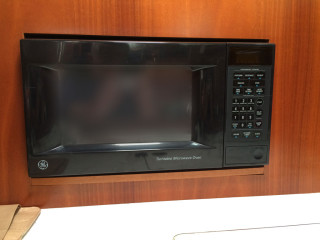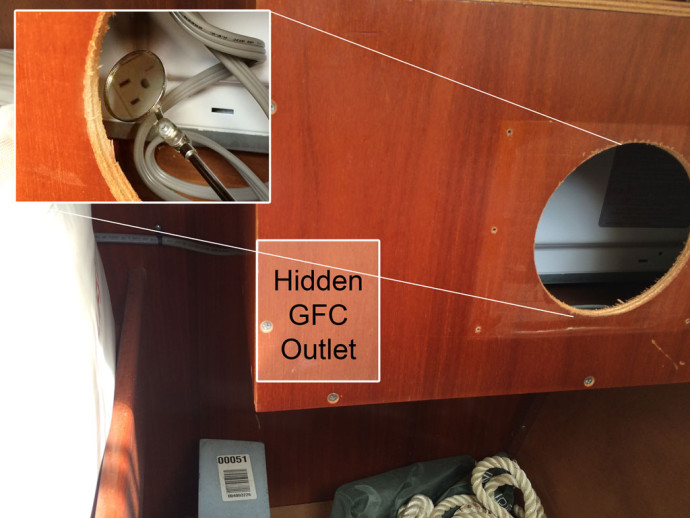The other day my microwave just up and died. After making progress on my to-do list it was an unexpected kidney punch. At this point I’ll be honest, my serenity goes up and down in relation to that to-do list. It’s the single biggest barometer I have to when I’ll be able to shove off and sail the Caribbean. So when the microwave died I literally sat there starring at the broken contraption trying to will it back to life. That obviously didn’t work so I had to lengthen my hated to-do list with a new task – ‘Fix the DAMN Microwave’.
The main reason for this post is mostly to warn production boat owners; the resolution to this completely inappropriate calamity was directly due to the design and manufacture of my boat.
The first thing everyone suggested was to check the GFCI outlets on the boat. Yep check! I reset them all, no help. The next thing for me was to get my hands dirty and find out how the microwave was wired into the system.
I found out the microwave was daisy chained off the galley GFCI outlet, fair enough. Going for the easiest problem I pulled the galley’s GFCI outlet to check the voltage running off to the microwave, 118.7 volts. So the outlet hadn’t failed there was power going to the microwave.
On my Beneteau 361 the microwave is mounted in a recessed to maximize counter space in the galley, which I actually like. Unfortunately for this to work the microwave recess has to protrude into the dark bowls of the sail locker behind the galley bulkhead. Which means I have to empty the sail locker!
“Ah the glamorous world of marine repair!”
I found a Romex cable coming from the back of the galley GFCI outlet that disappears into the cabinet that supports the microwave in sail locker. There was a 6”x6” vent in that cabinet, since it was easy to remove, I took it off and found the microwave power cable. It was not the Romex I was expecting,
It was a normal power cable you find on almost all appliances. After seeing the Romex coming from the outlet I had assumed the microwave was wired directly ‘Industrial Style’. That was obviously a wrong assumption.
Note: In my defense, I used to work for a large manufacturer and I know the lengths corporations will got to to shave a dime off a product. Wiring an appliance directly, to remove a junction box, is exactly the kind of trick I was expecting.
Since the access hole is not very big even after removing the vent plate I grabbed my trusty ‘mirror on stick’ (I love that tool) and started looking around.
Sure enough there it was, ANOTHER GFCI outlet hidden inside the cabinet behind the microwave. I had no idea it was even in there. You can’t see it from the front, there are no bolts or screws on the outside to telegraph it’s presence. It’s not shown on any of the wiring diagrams from the manufacturer, NOTHING!
I have done quite a bit of residential work on homes throughout my life and one of the many things I learned was: ‘You never put two GFCI outlets in series’. Not only is it redundant and wasteful; if two GFCI outlets are not in sync(due to tolerances) they can fight each other and create false trips.
So imagine my surprise that not only was the outlet hidden and difficult to access it was also a GFCI outlet in series with the GFCI galley outlet. (insert salty language of choice here!)
Sure enough the hidden and inaccessible GFCI outlet breaker was tripped. I reset it and the microwave came back to life like nothing had happened.
Starting to think the boys on the Beneteau manufacturing floor decided to have a fun little with the customers.
The good news is that the repair didn’t cost me anything, but time, which we can all attest to is a rare thing for a boat owner. Back to my original point, I don’t know if this is standard on production boats, but if you have an A/C appliance die. First check the accessible GFCI outlets after that, go look for possible hidden GFCI outlets that might be buried in the dark places of your boat.
Cheers,
Island Rambler
P.S. This is almost as insidious as in-line fuses, I’ll talk later about the abomination that is the in-line fuse.










